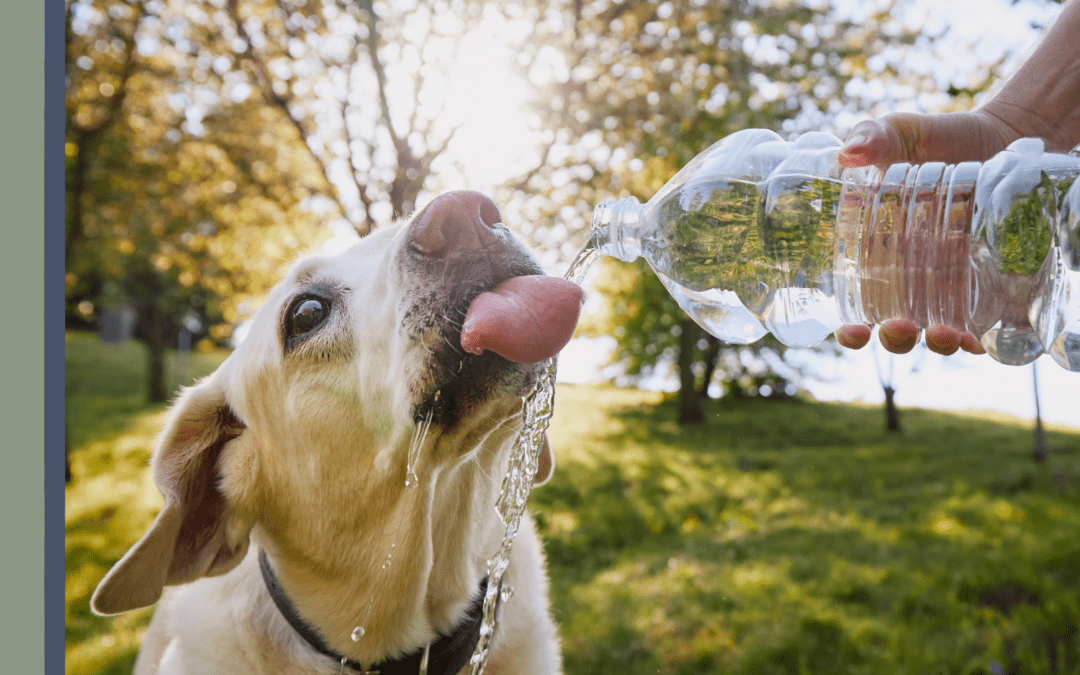Keeping your pet well-hydrated is essential for their health and happiness. Just like us, pets need plenty of water to stay healthy. Let’s dive into what to watch for, the risks of dehydration, and how to make sure your furry friend is drinking enough water. Plus, we’ll cover what to do if dehydration becomes serious.
Signs of Pet Dehydration
It’s important to know the signs of dehydration in your pet so you can act quickly. Here are some things to look out for:
- Sticky or Dry Gums: Healthy pets usually have moist gums. If this area is dry, it could be a sign of dehydration.
- Loss of Skin Elasticity: Try gently pinching the skin on the back of your pet’s neck. If it doesn’t snap back quickly, your pet might be dehydrated.
- Sunken Eyes: Dehydrated pets often have eyes that look sunken.
- Lethargy: If your pet seems unusually tired or less active, dehydration might be the cause.
- Reduced Appetite: A dehydrated pet might not be interested in eating.
- Panting and Drooling: Excessive panting and drooling can also indicate dehydration.
Dangers of Decreased Water Intake
Dehydration can lead to serious health issues for pets, including:
- Kidney Problems: Long-term dehydration can harm your pet’s kidneys.
- Heatstroke: Dehydrated pets are more likely to suffer from heatstroke, especially in hot weather.
- Digestive Issues: Dehydration can cause constipation and other digestive problems.
- Electrolyte Imbalance: Proper hydration keeps electrolytes balanced, which is important for muscles and nerves.
- Circulatory Issues: Dehydration can reduce blood volume, affecting organ function.
Ensuring Pets Drink Enough Water
Here are some tips to help keep your pet hydrated:
- Provide Fresh Water: Always have fresh, clean water available. Change the water daily and clean the bowl regularly.
- Multiple Water Stations: Place water bowls in different spots around your home, especially if you have a large house or multiple floors.
- Wet Food: Adding wet food to your pet’s diet can increase their water intake.
- Water Fountains: Some pets prefer drinking from moving water. Pet water fountains can be a fun way to encourage them to drink more.
- Flavor the Water: Adding a little low-sodium broth to the water can make it more appealing.
- Monitor Intake: Keep an eye on how much water your pet is drinking, especially during hot weather or after exercise.
When Dehydration Becomes Serious
If you think your pet is severely dehydrated, it’s important to act quickly. Severe dehydration can be dangerous, but here’s what you can do:
- Call Us! If you notice extreme lethargy, sunken eyes, or if they are unresponsive, contact us at 864.372.2393 right away.
- Offer Small Amounts of Water. If possible, give your pet small sips of water while on the way to the vet. Avoid giving large amounts, as this can cause vomiting.
- Veterinary Care. Severe dehydration often requires professional treatment, such as intravenous fluids, to rehydrate and balance electrolytes.
Conclusion
Dehydration is a serious issue that can affect your pet’s health, but with the right knowledge and care, you can help keep them hydrated and happy. By recognizing the signs of dehydration and taking steps to ensure your pet is drinking enough water, you can prevent many of the associated health risks. If you ever notice signs of severe dehydration, don’t hesitate to seek veterinary help. Keeping your pet well-hydrated, especially in hot weather or after lots of play, is key to their overall well-being.



